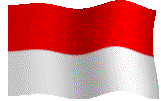History
The strategic position of Indonesia and its waterways between the Indian and Pacific Oceans has led to a fascinating and complex cultural, religious, political and economic history.Evidence of Indonesia’s earliest inhabitants include fossils of "Java Man" (Pithecanthropus Erectus), which date back some 500,000 years, discovered near the village of Trinil in East Java by Dr. Eugene Dubois in 1809.
Major migration movements to the Indonesian archipelago began about 3000 years ago as the Dongson Culture of Vietnam and southern China spread south, bringing with them new Stone, Bronze and Iron Age cultures as well as the Austronesian language. Their techniques of irrigated rice cultivation are still practiced throughout Indonesia today. Other remnants of this culture such as ritual buffalo sacrifice, erection of stone megaliths and lkat weaving are still visible in isolated areas across the archipelago.
Indonesia came under the influence of a mighty Indian, civilization through the gradual Influx of Indian traders in the first century AD, when great Hindu and Buddhist empires were beginning to emerge. By the seventh century, the powerful Buddhist Kingdom of Sriwijaya was on the rise, and it is thought that during this period the spectacular Borobudur Buddhist temple was built in Central Java. The thirteenth century saw the dominance of the fabulous Majapahit Hindu Empire in East Java, which united the whole of modern-day Indonesia and parts of the Malay peninsula, ruling for two centuries.
Monuments across Java such as the magnificent Prambanan temple complex near Yogyakarta, the mysterious Penataran temple complex in East Java and the ethereal temples of the Dieng Plateau are all that remain of this glorious period in Indonesia’s history.The first recorded attempt at armed invasion of Indonesia is credited to the notorious Mongol Emperor Kubilai Khan, who was driven back in 1293. Arab traders and merchants laid the foundations for the gradual spread of Islam to the region, which did not replace Hinduism and Buddhism as the dominant religion until the end of the 16th century.
A series of small Moslem kingdoms sprouted up and spread their roots, but none anticipated the strength and persistence of European invasions which followed. In 1292, Marco Polo became one of the first Europeans to set foot on the Islands, but It wasn’t until much later that the Portuguese arrived in pursuit of spices. By 1509 Portuguese had established trading posts in the strategic commercial center of Malacca on the Malay peninsula. Their fortified bases and the inability of their enemies to unify against them allowed the Portuguese to control strategic trade routes from Malacca to Macau, Goa, Mozambique and Angola.
Inspired by the success of the Portuguese, the Dutch followed at the turn of the 16th century. They ousted the Portuguese from some of the easternmost islands, coming into conflict with another major European power, Spain, which had focused its colonial interests in Manila. The Dutch expanded their control of the entire area throughout the 17th and 18th centuries.
The Dutch East Indies, as it was known at this tune, fell under British rule for a short period during the Napoleonic Wars of 1811-1816, when Holland was occupied by France, and Dutch power overseas was limited. While under British control the Lt. Governor for Java and its dependencies was Sir Thomas Stamford Raffles, who was known for his liberal attitude towards the people under colonial rule and his research on the history of Java.With the return of the Dutch in 1816, a period of relative peace was interrupted by a series of long and bloody wars launched by the local people against the Dutch colonial government.
The Indonesian nationalist and independence movements of the 20th century have their roots in this period. Upper and middle class Indonesians, whose education and contact with Western culture had made them more aware of colonial injustice, began mass movements which eventually drew support from the peasants and urban working classes.The Japanese replaced the Dutch as rulers of Indonesia for a brief period during World War II. The surrender of the Japanese in 1945 signalled the end of the Second World War in Asia and the start of true independence for Indonesia. With major changes in global consciousness about the concepts of freedom and democracy, Indonesia proclaimed its independence on the 17th of August of that same year.
The returning Dutch bitterly resisted Indonesian nationalist movements and intermittent fighting followed. Under the auspices of the United Nations at the Hague, an agreement was finally reached on December 9, 1949, officially recognizing Indonesia’s sovereignty over the former Dutch East Indies.


